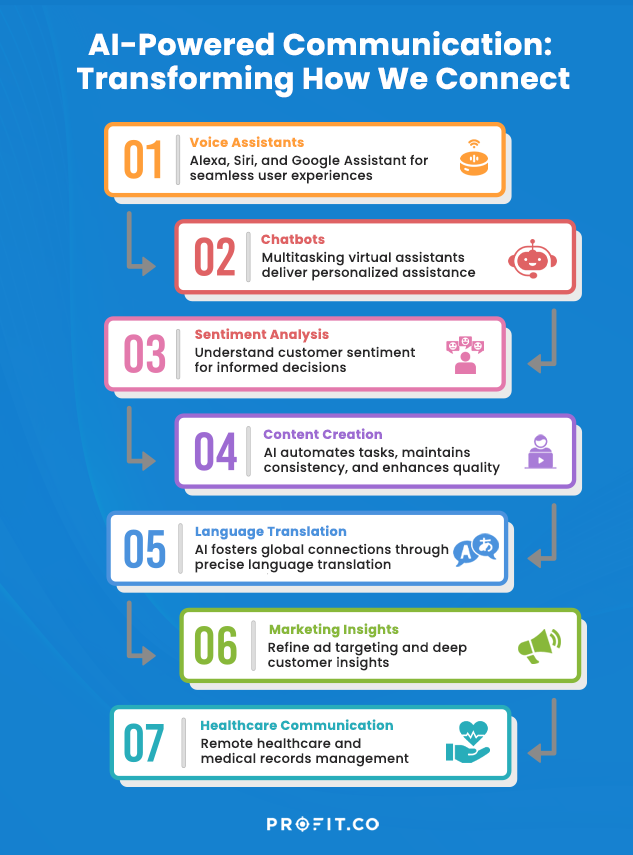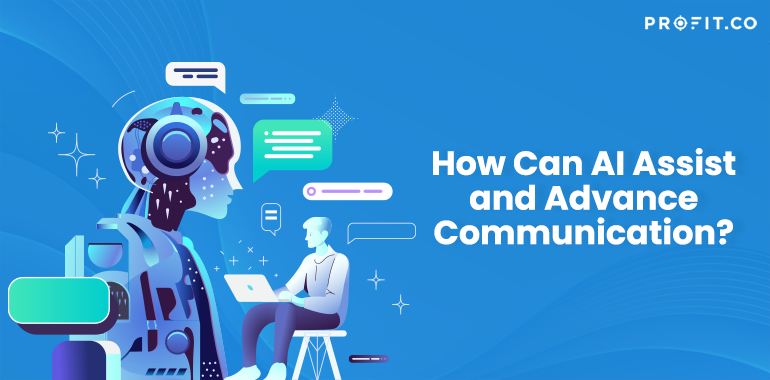“AI is our biggest existential threat.”
What is AI?
As opposed to what we have seen in blockbuster movies and other forms of fiction, the reality of AI is far simpler. The computer and cognitive scientist John Mcarthy, who was also one of the founders of the Artificial Intelligence discipline, defined it as “the science and engineering of making intelligent machines, brilliant computer programs. It is related to the similar task of using computers to understand human intelligence, but AI does not have to confine itself to biologically observable methods.”
To put it more simply, and for the context of this article, AI is the simulation of human thinking through software code. When you feed an AI system enough data, it should be able to suitably predict the most optimal result to questions posed to it. We see simple versions of this throughout our daily lives in the cloud-based software we use and other applications. The end goal in the long term is for AI to mimic human cognitive activity. However, that appears more complex as human judgment has far more intrinsic biases interlaced than one would initially think. This technology is reshaping how we interact as individuals and as businesses.
Understanding AI Communication
Indeed, artificial intelligence has transcended the realms of science fiction and become an integral part of our daily lives. It fuels essential functions like language translation, content creation, and even lighthearted banter. Yet, beneath this technological marvel lies a sophisticated network of algorithms and intricate linguistic associations. AI communication represents how machines grasp, decipher, and leave their mark on our interconnected world.
Learn more about achieving continuous learning for your organization
Natural Language Processing (NLP)
Natural Language Processing (NLP) is at the heart of AI communication, which allows computers to comprehend, interpret, and produce human language. By merging aspects of linguistics, computer science, and AI, NLP bridges the gap between human communication and machine comprehension. NLP algorithms handle natural language data, such as text or speech, to extract meaning and generate suitable responses through processing and analysis. This groundbreaking field enables machines to understand, interpret, and generate human language, revolutionizing our communication with technology.
Enhancing User Experience with Voice Assistants
Voice assistants have gained widespread popularity, with well-known instances such as Amazon’s Alexa, Apple’s Siri, and Google Assistant. These smart-systems rely heavily on NLP to deliver a smooth and intuitive user experience. Handling spoken commands, voice assistants execute various tasks, answer questions, and even engage in casual conversations. NLP algorithms scrutinize the spoken input, unravel the user’s intentions, and extract pertinent details to generate suitable responses. This ability allows voice assistants to emulate human-like interactions, making them indispensable tools in our daily routines. Gartner’s research predicts that the addition of generative AI (GenAI) capabilities into conversational AI solutions and virtual assistants (VAs) is starting now. It will change user experience with software by making voice a preferred user interface for 60% of interactions in the next five years.
Transforming Customer Service with Chatbots
NLP-driven chatbots have revolutionized the landscape of customer service interactions. Gone are the days of enduring lengthy wait times and exasperating phone calls. Chatbots utilize algorithms to comprehend and address customer inquiries through text-based conversations. These intelligent virtual assistants can manage multiple customer queries concurrently, delivering immediate responses and personalized assistance. Chatbots provide precise and contextually appropriate answers by analyzing extensive datasets encompassing past customer interactions and product details. Consequently, they have become indispensable business tools, delivering round-the-clock support, elevating customer satisfaction, and reducing operational expenses.

Insights Through Sentiment Analysis
Understanding customer sentiment is important for businesses to assess satisfaction levels, recognize patterns, and make well-informed choices. Sentiment analysis involves scrutinizing textual information from social media posts, customer reviews, and surveys to ascertain whether the expressed sentiment is positive, negative, or neutral. Businesses can acquire valuable insights into customer opinions and emotions on a large scale and understand individual preferences. It leverages data to offer tailored product or content recommendations, enhancing engagement and satisfaction.
Transforming Content Creation
From generating ideas to finalizing content, automation tools have revolutionized content communication. With the help of AI, writers and marketers can now focus more on strategy and creativity while leaving repetitive tasks to the machines. AI-powered tools can help create content, such as research, writing, editing, and distribution. Using predefined templates, content creators can quickly adapt their content to fit various formats, whether a blog, social media post, or email newsletter.
Writing error-free content is essential to maintaining credibility and engaging readers. However, manually proofreading and editing every piece of content can be very time-consuming and subject to human error. AI-powered tools, such as Grammarly and ProWritingAid, correct grammar and spelling and offer suggestions to improve clarity and readability. These tools analyze sentence structure, word choice, and other linguistic elements to provide valuable insights for enhancing the quality of content.
With the explosion of online information, content curation has become an essential practice for content creators. Content curation involves finding, organizing, and sharing relevant and valuable content with your audience. AI-powered content curation tools can efficiently sift through vast data, identify relevant content, and organize it into curated collections. These tools save time and effort, ensuring content creators stay updated with AI strategies and industry trends that provide their audience with valuable insights.
Breaking Language Barriers with Translation Tools
Ai has significantly enhanced the capabilities of language translation. Platforms such as Google Translate utilize NLP algorithms to ensure precise text conversion from one language to another. By examining grammar, vocabulary, and contextual cues, these tools deliver dependable translations, facilitating communication across different languages. Real-time language interpretation has revolutionized international business, diplomacy, and cross-cultural collaboration. Language translation tools have played a pivotal role in bringing people worldwide closer together, fostering global connections, and enabling meaningful interactions.
AI’s Role in Share of Voice
AI-driven algorithms meticulously sift through user data, enabling the delivery of hyper-targeted advertisements. This precision boosts conversion rates and enhances the overall effectiveness of marketing ad campaigns. AI helps identify trends, discern customer preferences, and pinpoint the optimal timing for campaign launches. AI helps identify trends, market share, discern customer preferences, and pinpoint the optimal timing for campaign launches. Businesses gain profound insights into customer behavior and market trends through AI-driven data analytics. Gartner’s research predicts that by 2025, 30% of marketing content will be created by generative AI but human-augmented, from less than 2% in 2022.
AI in Healthcare Communication
Within the domain of healthcare communication, AI plays a transformative role. Thanks to AI, Telemedicine and virtual consultations have witnessed a surge in popularity. It enables remote healthcare delivery, allowing for virtual consultations and the remote monitoring of patients. This not only enhances accessibility to healthcare services but also facilitates timely medical interventions.
AI streamlines managing medical records, making healthcare information more accessible and secure. It revolutionizes how healthcare data is stored, retrieved, and secured, ultimately contributing to more efficient and organized healthcare communication.
Challenges and Future Directions
Imagine multilingual real-time conversations via AI earpieces or AI-powered negotiation bots optimizing business deals. The possibilities are vast and exciting. Despite remarkable progress, AI still faces challenges in fully understanding the complexities of human language. Ambiguity, sarcasm, cultural references, and rapidly evolving language trends pose obstacles that researchers and developers continue to tackle. However, advancements in AI, machine learning, and deep learning are pushing the boundaries of what can be achieved. With further innovation, we expect AI to enhance user experiences, facilitate even more accurate language understanding, and open up new possibilities in human-computer interaction.
Conclusion
Communication in the Age of AI is a transformative journey. As AI integrates deeper into our lives and workplaces, it presents immense opportunities for more efficient, personalized, and engaging and better business communication in 2025 communication. Embracing AI’s potential while addressing ethical considerations is the key to navigating this exciting frontier. Our overall takeaway is that AI can become the ultimate assistant to human communication. As all technological advancements do, AI is best used to simplify our work, not replace us. The whole point here is that it works because they have a depth of data to select from, and they can only advance if we continuously add to it. AI will improve alongside it as we further research how communication advances, leaving it to us to decide how to utilize it best.

